Mar 11 2017
Friday – 18x45sec – and fusion work
In the morning I hit the road early and drove to Prague. On the D1 route through the Czech-Moravian highlands I was surprised by two pretty heavy snowstorms, but I arrived (unexpectedly) on time, because there were hardly any traffic jams into the city.
Had a few meetings in our Prague office, then drove to Andel for a lunch with a few rowers interested in rowsandall.com. It was a very positive meeting, and perhaps some nice side projects result from it. It’s encouraging to see that people see the value of the little toolset I have built in the past year.
This was the blog post on the day I started to look at some Python code in an email from Greg. On March 17th, he had written. “Hey, check this out. I made a python post processor for Painsled stroke files. Still working on the time formats. Thought you’d be interested.”
Well, yes I was interested.
Currently I am working on Data Fusion. I need this because on my rows at the rowing club, I am working with Concept2 ergs with the older PM3 monitor. I have no heart rate dongle for that, so the idea is to capture the PM data with one app and record heart rate with another app. Then fuse the data, which means that I add the heart rate data to the PM data into a new workout. It sounds very simple, but there is some time alignment and interpolation involved. Fortunately, it is easy to get Python and its Pandas package to do this to your data.
Here is one successfully fused steady state workout (3×20 minutes):
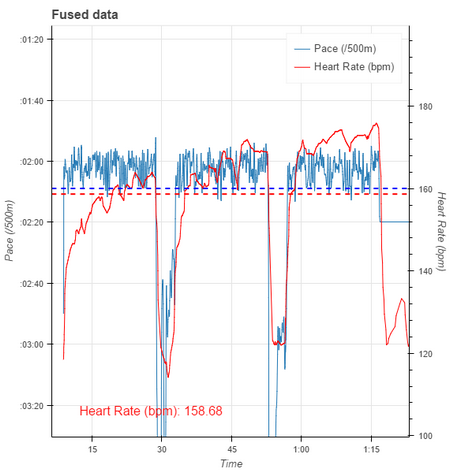
Pretty cool stuff.
I did a sprinterval workout yesterday, after an uneventful drive back to Brno. I went to the rowing club and dialed up 45 seconds “on” vs 1:15 “off”. Unfortunately, Painsled didn’t do a very good job at recording the workout. It didn’t record the real power and pace in the “off” sections. Also, I need to replace the battery in my Wahoo heart rate belt. It is showing some weird value swings. Hope it is just the battery.
Here is the resulting plot (after data fusion):
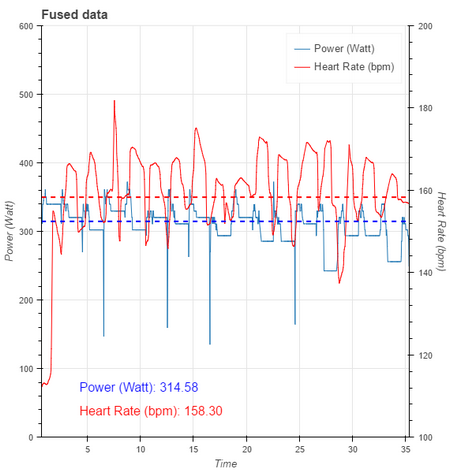
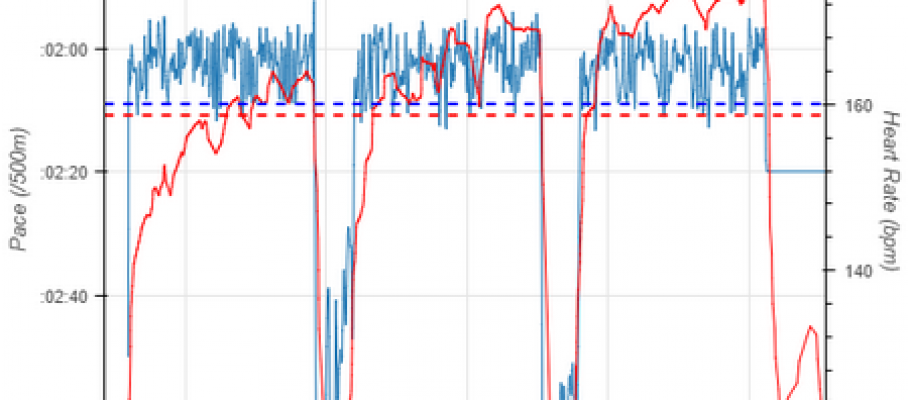
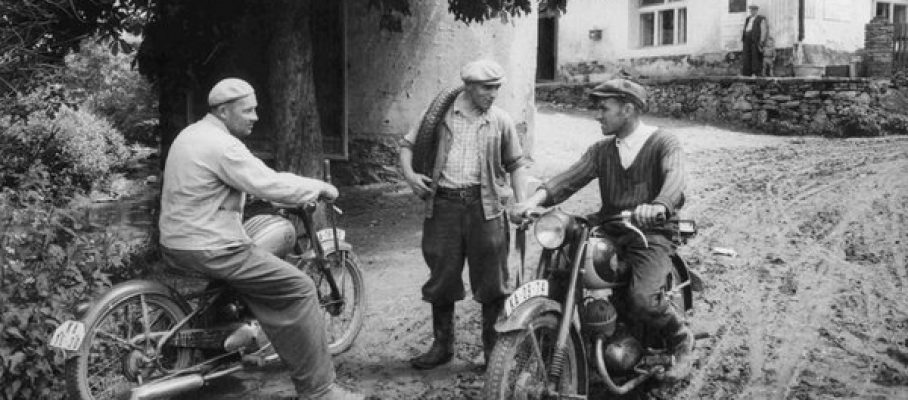
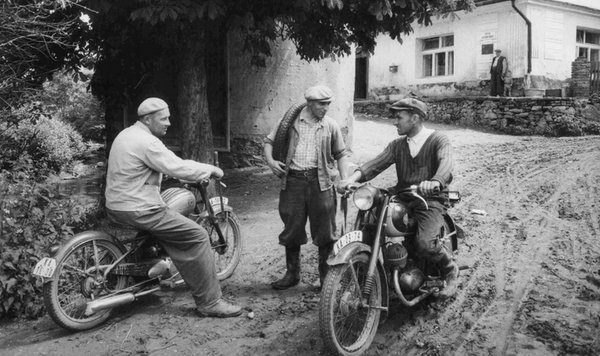
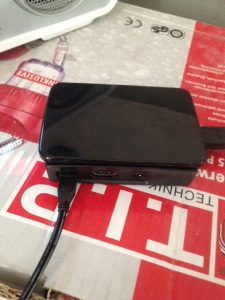
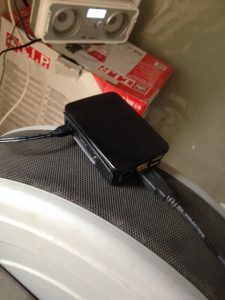
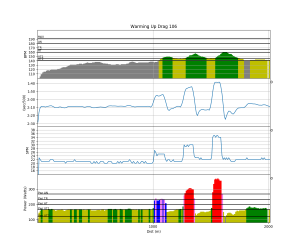
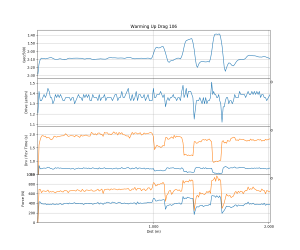
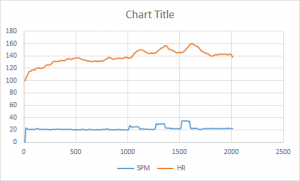
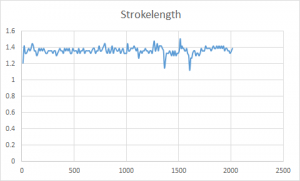
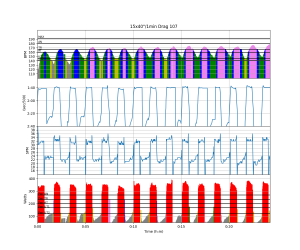
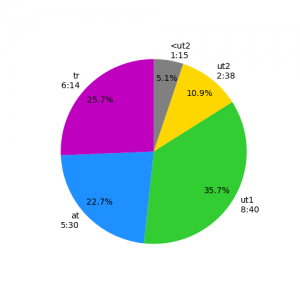
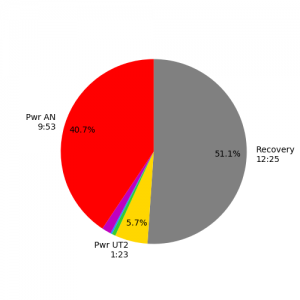
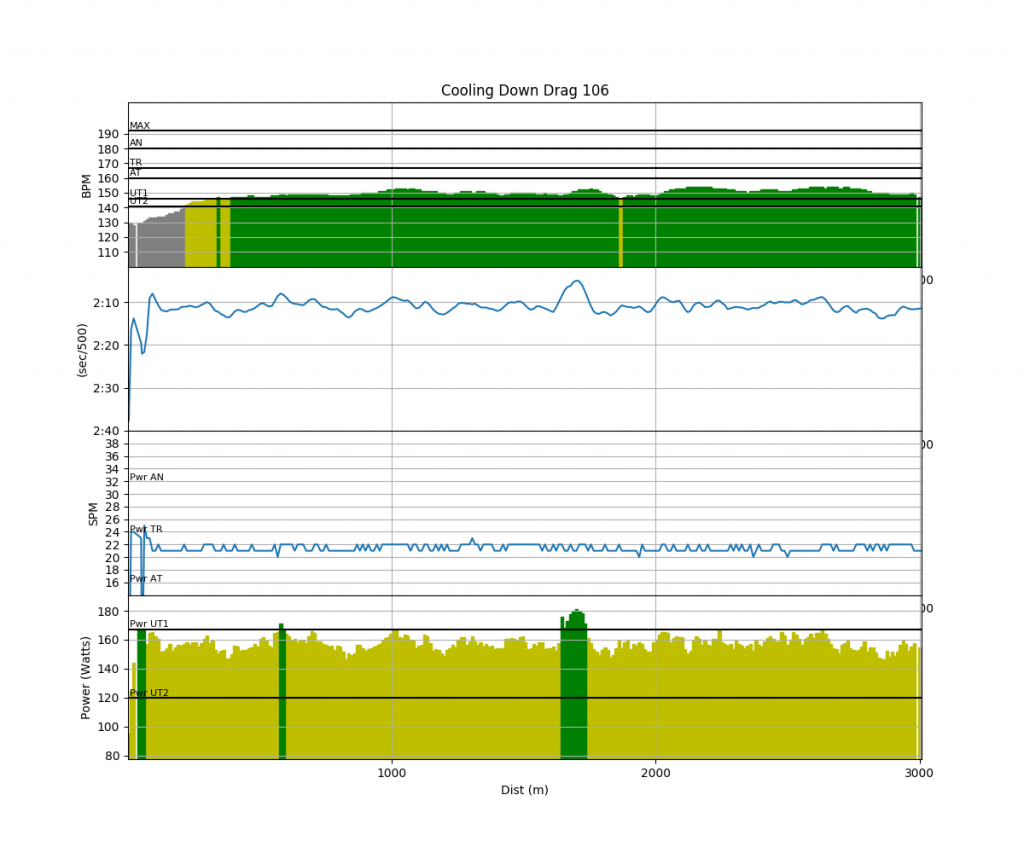
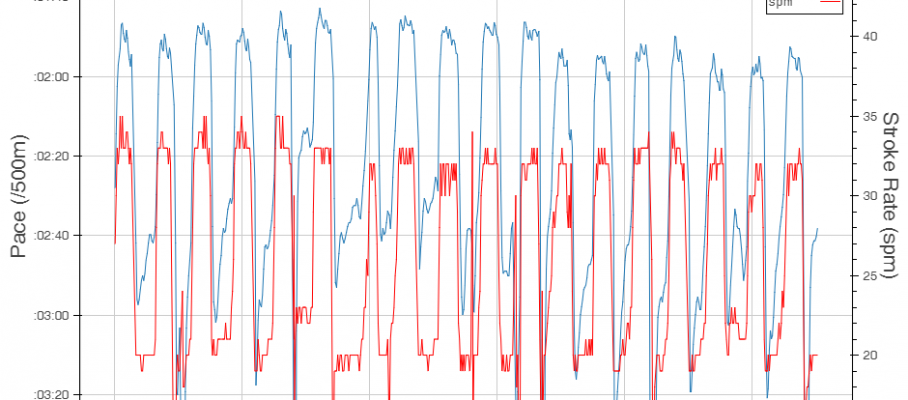


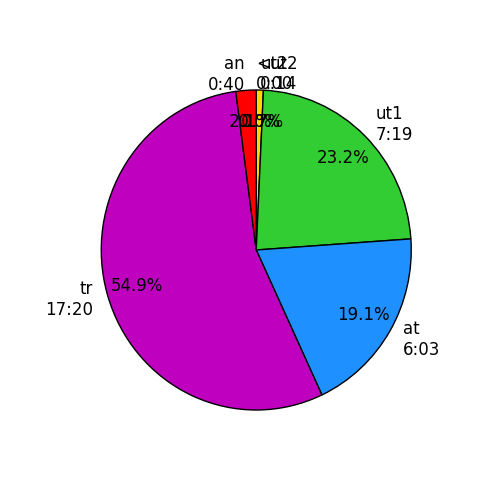
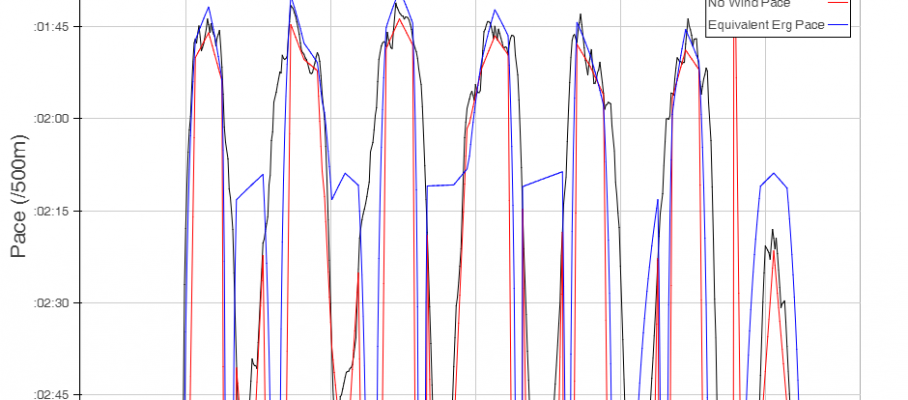


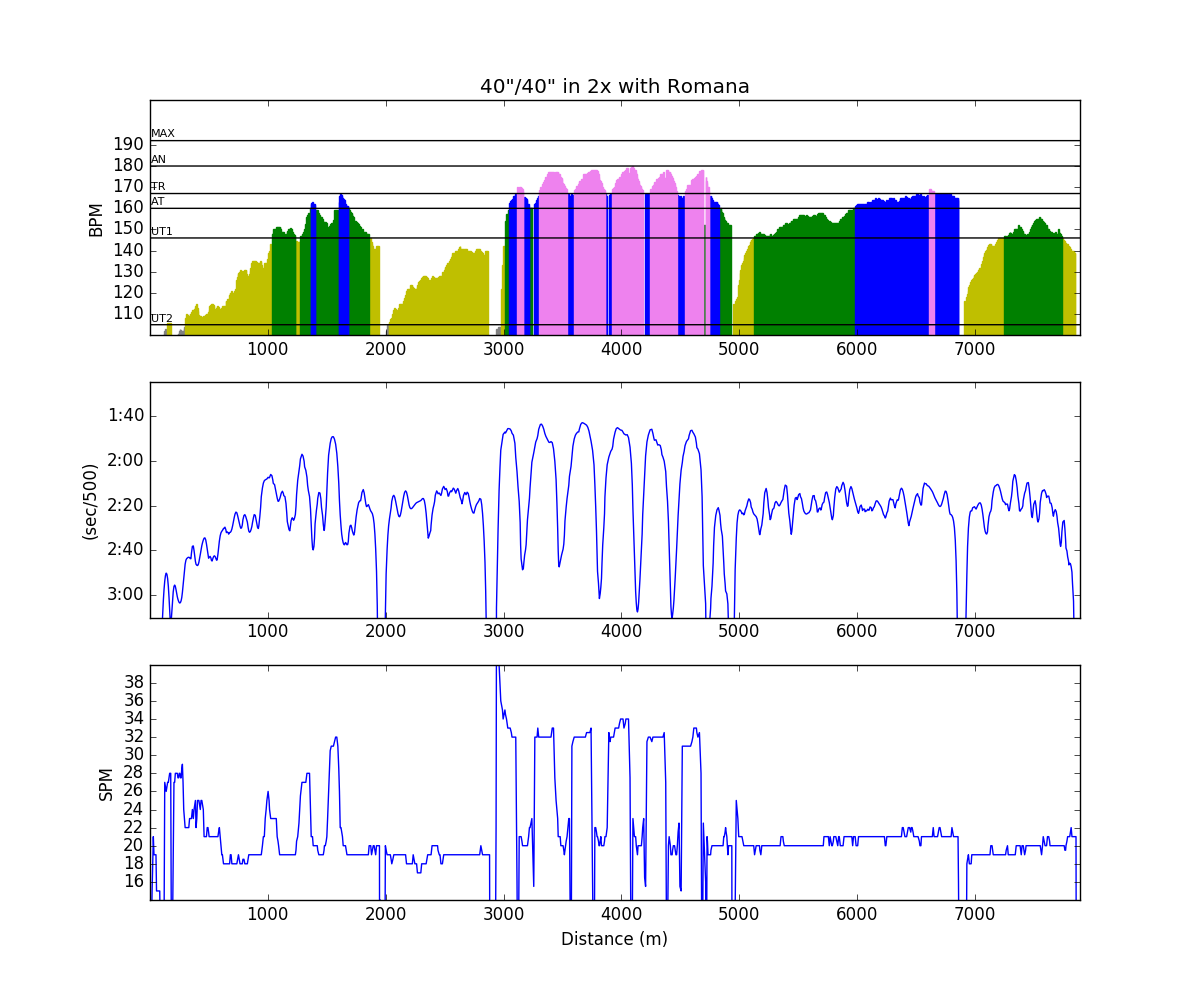
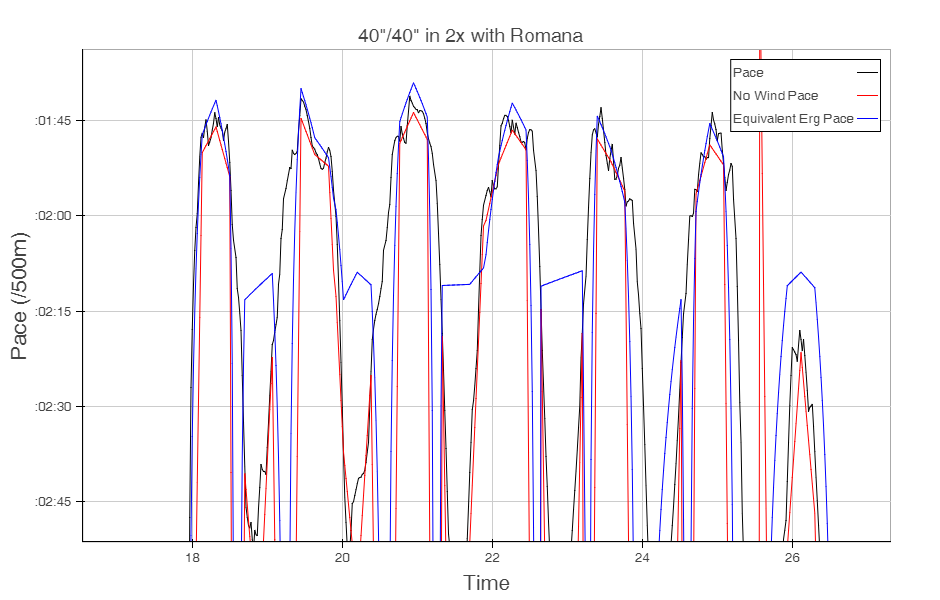
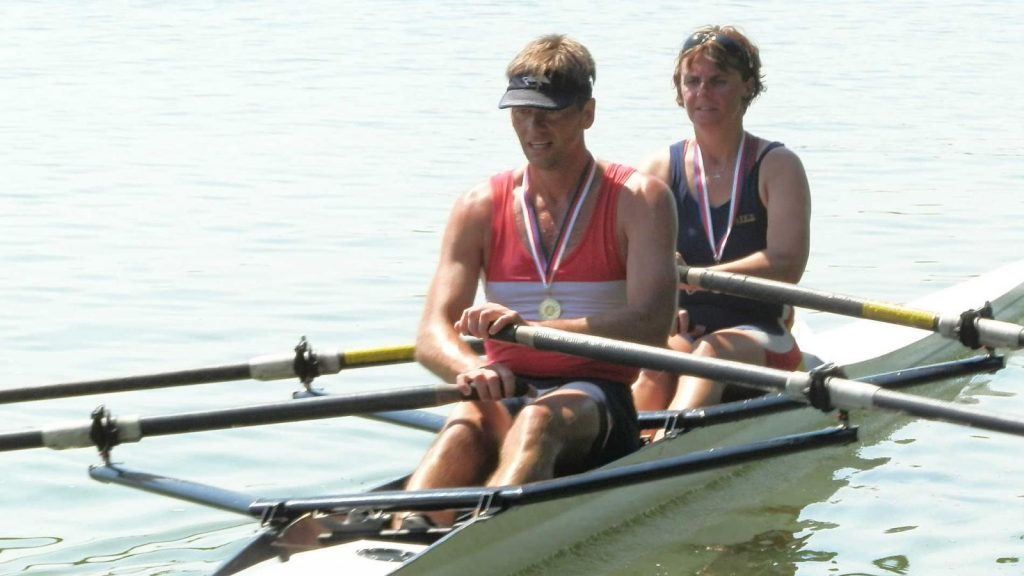
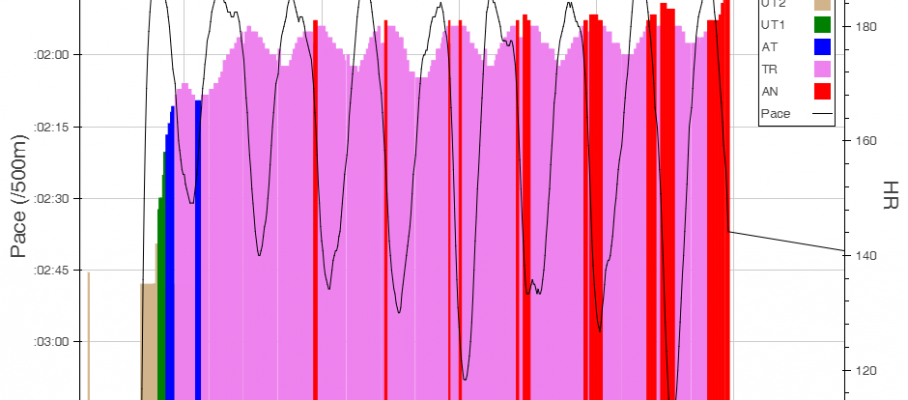
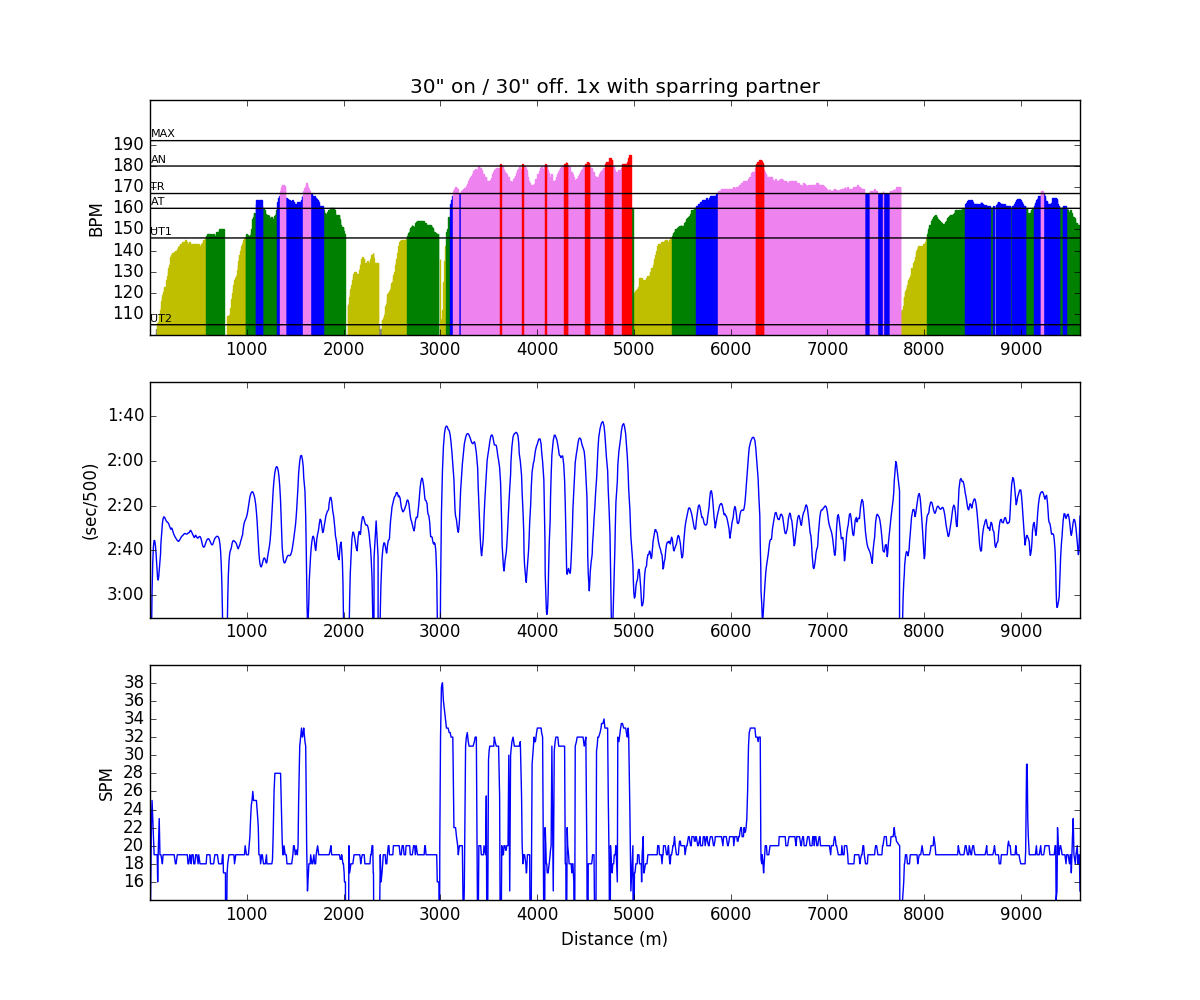



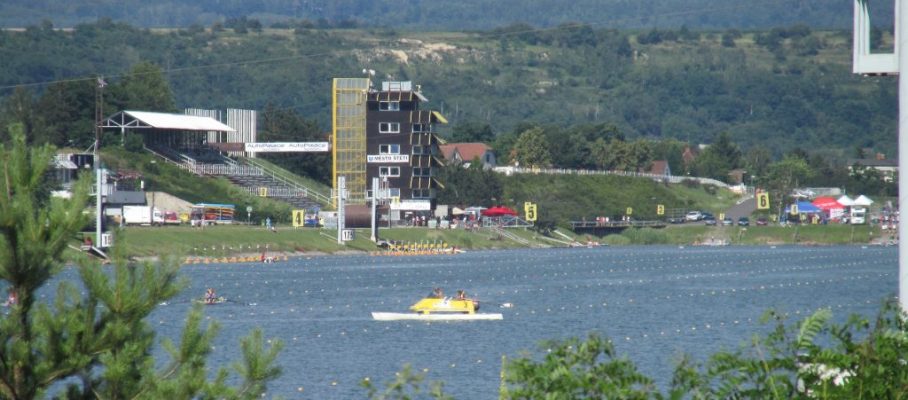
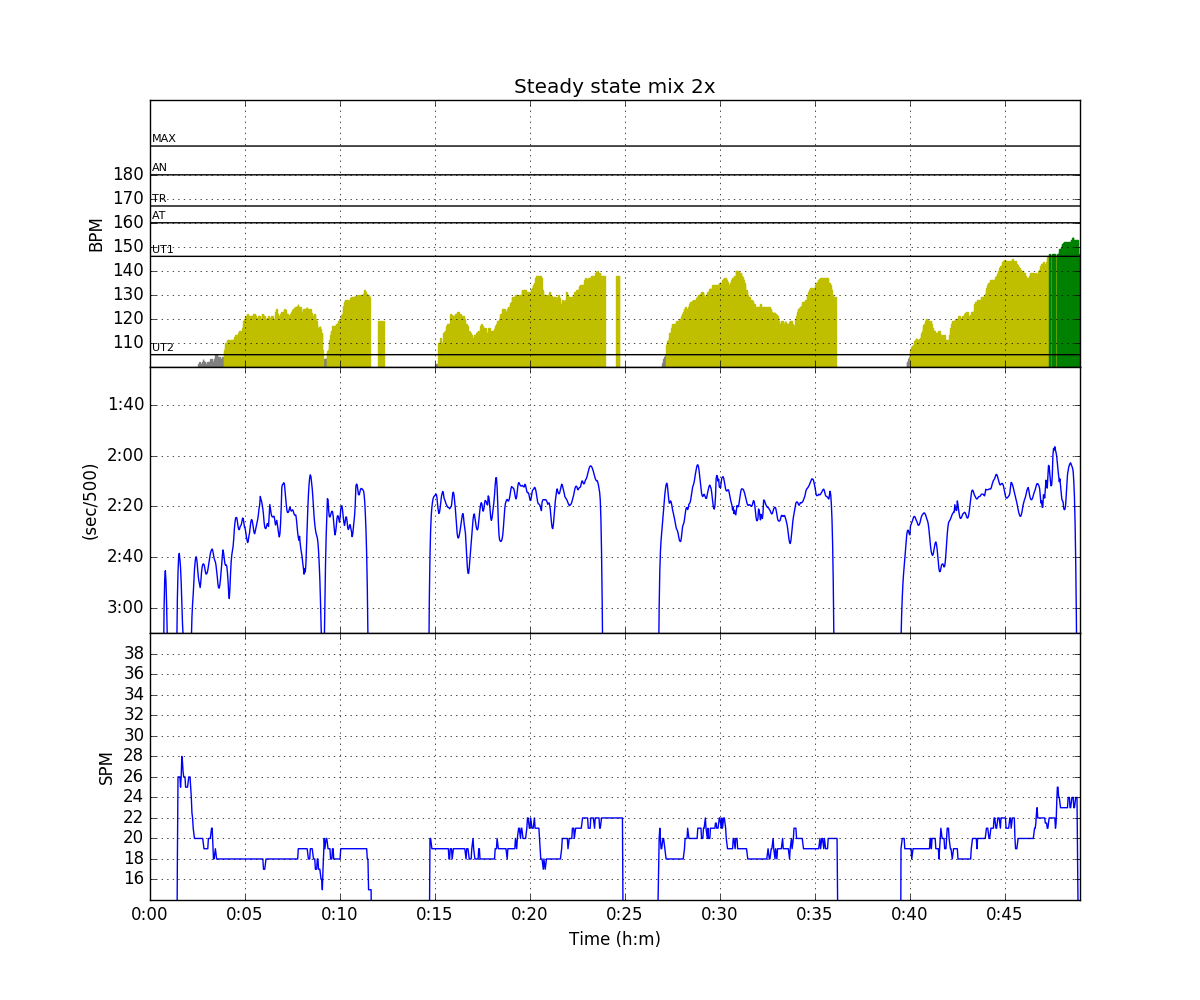
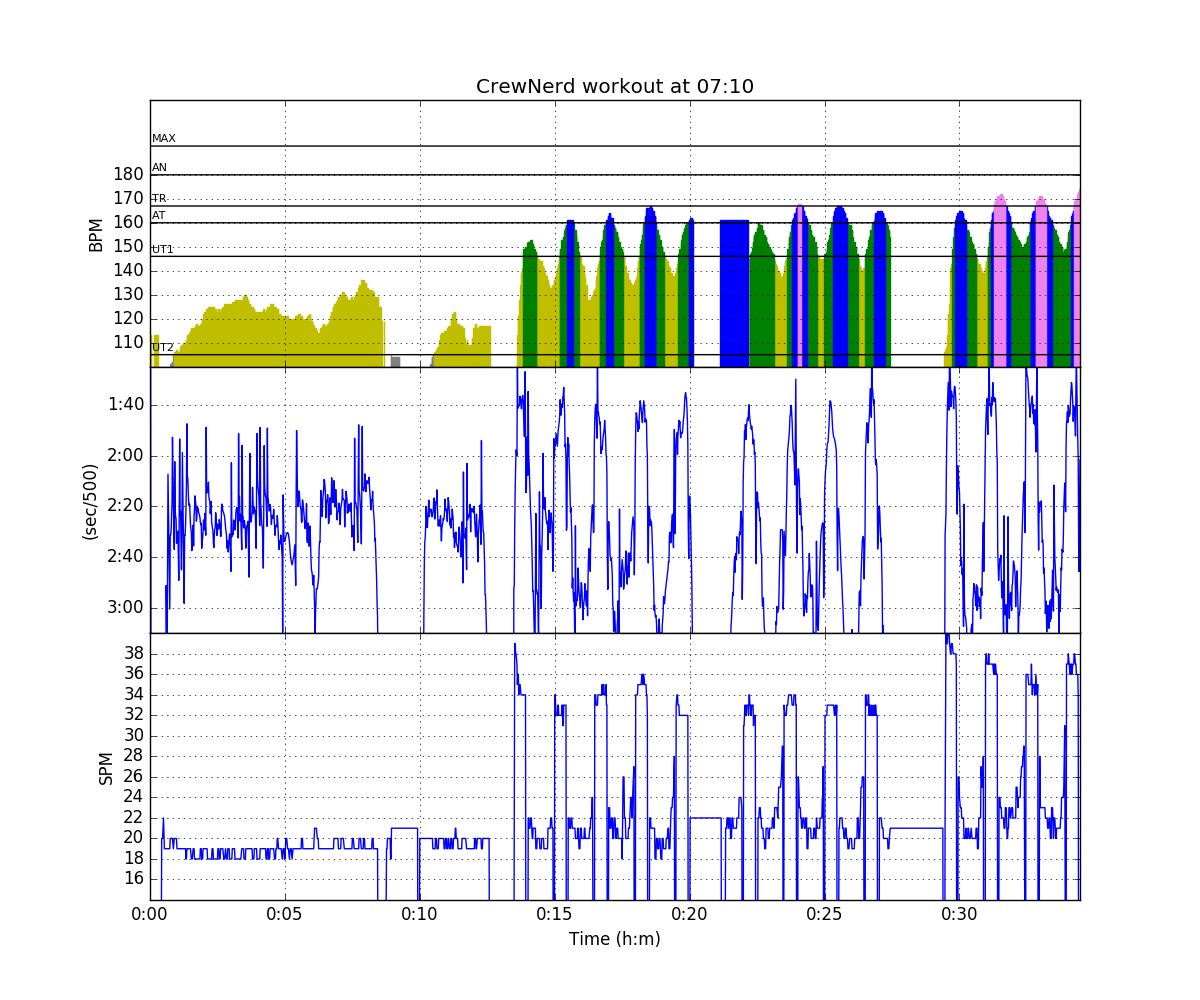
Mar 21 2017
Račice day 2 – Sprintervals
Alarm clock at 5:30, pushing off the dock at 6:00. With the jet lag and everything I had expected this to be very hard, but I hopped out of bed with no problem. Then I had the canal for myself and mirror flat water. Heaven!
The session was Nx30″/60″ with N being the number of intervals that fit into three straight 2k segments. In the end N turned out to be 21, if I count correctly.
On purpose, the breaks were long enough to allow me to focus on form, rather than going into workout survival mode. I think that paid off. As the intervals progressed, I got back that boat feeling (that one so successfully destroys when stuck to the static erg) and was able to see some nice pace numbers (1:48 was the lowest split I saw).
A slight adjustment in the foot stretcher. I think I am where I want to be now.
Here are the pie charts:
I was curious to see the technique metrics (slip, wash, effective length vs total length, etc) for this first time in the season I have consistently worked above 30spm on the water.
I think the slip and wash numbers look pretty good. I am wondering whether the numbers given by NK in their guidance are for race pace, because I get higher numbers for the paddling and steady state. Paddling between the intervals, both stroke length and effective stroke lengths are shorter, but this was just me paddling really easy. In most of the graphs above, I have selected only the “work” strokes. Here is the drive length graph for all strokes:
After the workout, I drove to the P+R just north of Prague and took the metro to our office on the other side of the city. It took me more than 90 minutes door to door, but the 45 minutes on the metro were usable for reading and working, so not much time lost.
Tomorrow: Steady state, again in the early hours. It will be just me, mirror flat water, and birds singing in the forests around the canal.
By sanderroosendaal • Uncategorized • 2 • Tags: OTW, rowing, single, sprintervals, training